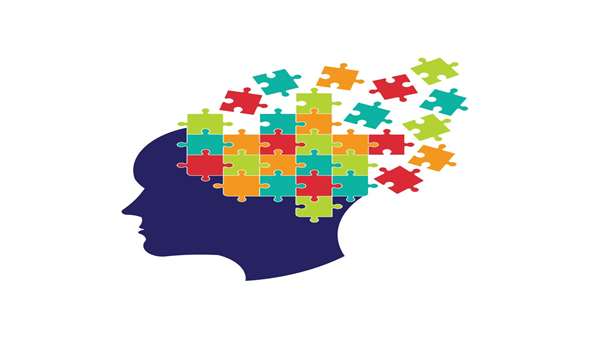Lab-grown human brain organoids mimic an autism spectrum disorder, help test treatments
Most autism spectrum disorders have a complex, multifactorial genetic component, making it difficult to find specific treatments. Rett syndrome is an exception.
Most autism spectrum disorders have a complex, multifactorial genetic component, making it difficult to find specific treatments. Rett syndrome is an exception. Babies born with this form of the disorder have mutations specifically in the MECP2 gene, causing a severe impairment in brain development that primarily affects females. Yet there is still no treatment—current therapies are aimed at alleviating symptoms, but don't address the root cause.
Researchers at University of California San Diego School of Medicine and Sanford Consortium for Regenerative Medicine recently used stem cell-derived brain organoids—also called "mini-brains"—that lack the functional MECP2 gene to better study the disease.
In a study publishing December 8, 2020 in EMBO Molecular Medicine, the team identified two drug candidates that counteract the deficiencies caused by lack of the MECP2 gene. These compounds restored calcium levels, neurotransmitter production and electrical impulse activity, returning the Rett syndrome brain organoids to near-normal.
"The gene mutation that causes Rett syndrome was discovered decades ago, but progress on treating it has lagged, at least in part because mouse model studies haven't translated to humans," said senior author Alysson R. Muotri, Ph.D., professor of pediatrics and cellular and molecular medicine at UC San Diego School of Medicine. "This study was driven by the need for a model that better mimics the human brain."
Brain organoids are 3-D cellular models that represent aspects of the human brain in the laboratory. These organoids help researchers track human development, unravel the molecular events that lead to disease and test new treatments. At UC San Diego, brain organoids have been used to produce the first direct experimental proof that the Brazilian Zika virus can cause severe birth defects and to repurpose existing HIV drugs to treat another rare, inherited neurological disorder. Muotri and team also sent their brain organoids to the International Space Station to test microgravity's effect on brain development—and maybe prospects for human life beyond Earth.
They aren't perfect replicas, of course. Organoids lack connections to other organ systems, like blood vessels. Drugs tested on brain organoids are added directly—they don't need to get across the blood-brain barrier, specialized blood vessels that keep the brain largely free of bacteria, viruses and toxins.
But researchers find organoids very useful for checking changes in physical structure or gene expression over time or as a result of a gene mutation, virus or drug. What's more, Muotri's team recently optimized the brain organoid-building process to match the electrical impulse pattern of premature babies, making them resemble real human brains more than ever.
In the latest study, the researchers applied this new protocol for functional brain organoids, using induced pluripotent stem cells (iPSCs) derived from patients with Rett syndrome. In short, they collected a skin sample, treated the cells in such a way that converted them to iPSCs, then in a way that coaxed them into becoming brain cells, preserving each patient's unique genetic background. To verify their findings, the team also engineered brain organoids that artificially lack the MECP2 gene, and even mixed mutated and control cells to mimic the mosaic pattern typically seen in female patients.
Lack of the MECP2 gene changed many things about the organoids: shape, neuron subtypes present, gene expression patterns, neurotransmitter production and synapse formation. Calcium activity and electrical impulses were also decreased. These changes led to major defects in the emergence of cortical neural oscillatory waves, aka "brainwaves."
In an attempt to compensate for the missing MECP2 gene, the team treated the brain organoids with 14 drug candidates that are known to affect various brain cell functions. Nearly all of the molecular and cellular symptoms were resolved when the researchers treated the Rett syndrome brain organoids with the two best drug candidates, Nefiracetam and PHA 543613. For example, the number of active neurons in Rett syndrome organoids roughly doubled following treatment. Nefiracetam and PHA 543613 were previously tested in Phase I and II clinical trials for the treatment of other conditions, meaning they are already known to cross the blood-brain barrier and to be safe for human consumption.
According to Muotri, these lab-based results provide a compelling argument for advancing Nefiracetam and PHA 543613 into clinical trials for patients with MECP2-deficient neurodevelopmental disorders.
But in the end, the best treatment for Rett syndrome may not be one "super" drug, he said.
"There's a tendency in the neuroscience field to look for highly specific drugs that hit exact targets, and to use a single drug for a complex disease," said Muotri, who is also director of the UC San Diego Stem Cell Program and a member of the Sanford Consortium for Regenerative Medicine. "But we don't do that for many other complex disorders, where multi-pronged treatments are used. Likewise, here no one target fixed all the problems. We need to start thinking in terms of drug cocktails, as have been successful in treating HIV and cancers."
Reference:https://www.embopress.org/doi/full/10.15252/emmm.202012523




ارسال به دوستان